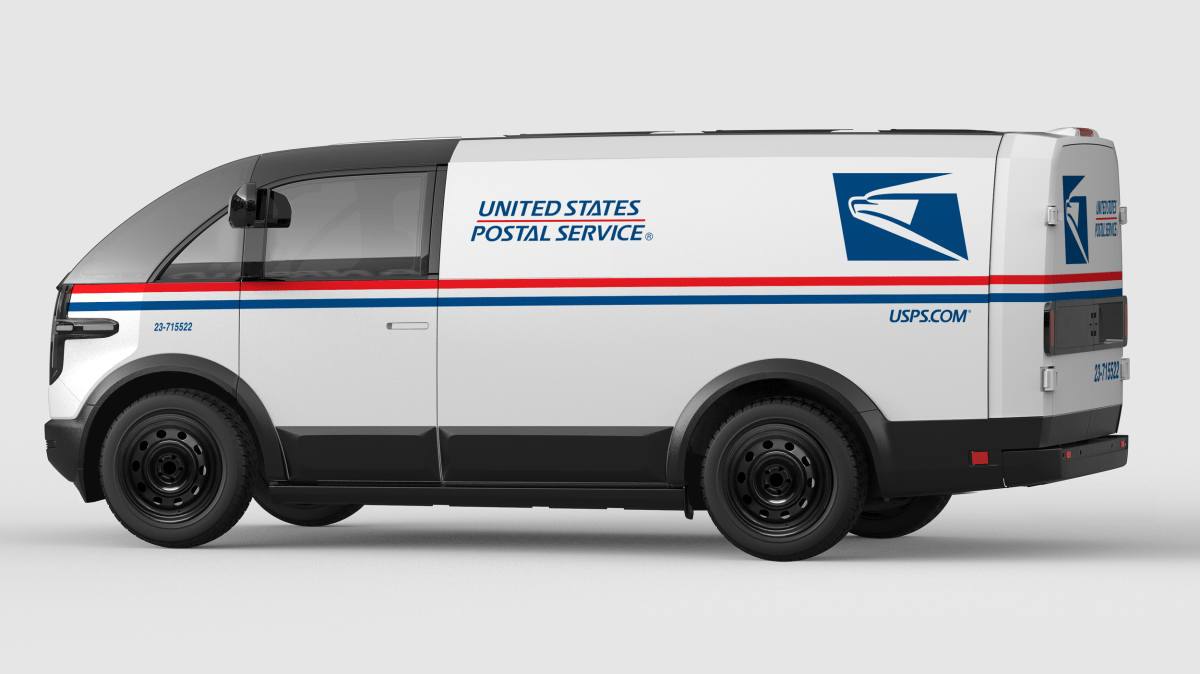And now, the United States Postal Service (USPS) is making a major leap towards sustainability by going electric with Canoo delivery vans. The USPS has announced a multi-year contract with Canoo, a Los Angeles-based electric vehicle (EV) manufacturer, to provide electric delivery vehicles that will be used in the USPS’ fleet for postal deliveries.
This partnership between USPS and Canoo marks a significant milestone in the electrification of the postal service’s delivery fleet. The USPS has been under pressure to reduce its carbon footprint and improve its environmental impact, and the decision to transition to electric vehicles is a step in the right direction.
Canoo’s EVs are designed to be versatile and practical, making them an ideal choice for delivery vehicles. The company’s electric vans feature a spacious interior with a modular design that allows for maximum cargo space, making them well-suited for transporting mail and packages. Additionally, Canoo’s EVs offer a range of advanced safety features and technologies, ensuring that postal workers can do their jobs safely and efficiently.
The decision to switch to electric delivery vans also aligns with the USPS’ commitment to meeting its sustainability goals. By introducing electric vehicles into its fleet, the USPS aims to reduce its greenhouse gas emissions and lessen its environmental impact. This move is in line with the broader trend of many organizations and industries transitioning to electric vehicles as part of their sustainability efforts.
Furthermore, the USPS’ decision to partner with Canoo reflects the growing demand for electric delivery vehicles in the market. As more companies prioritize sustainability and environmental responsibility, there is an increasing need for electric vehicles that can meet the demands of delivery and logistics operations. Canoo’s electric vans offer a compelling solution for these companies, providing reliable and efficient vehicles that also contribute to reducing emissions and promoting sustainability.
The shift towards electric delivery vans also presents various benefits for the USPS. Electric vehicles offer lower operational costs compared to traditional combustion engine vehicles, resulting in potential cost savings for the postal service in the long run. Additionally, electric vehicles require less maintenance and have fewer moving parts, leading to reduced downtime and increased reliability for the USPS’ delivery fleet.
Moreover, the introduction of electric delivery vans is an opportunity for the USPS to modernize its fleet and stay competitive in the evolving landscape of delivery and logistics. As consumers and businesses increasingly prioritize sustainability and eco-friendly practices, the demand for environmentally friendly delivery services is likely to grow. By adopting electric vehicles, the USPS can position itself as a forward-thinking and environmentally conscious provider of postal services.
The transition to electric delivery vans also offers positive implications for the broader electric vehicle industry. As a major player in the delivery and logistics sector, the USPS’ adoption of electric vehicles sets an example for other organizations and businesses, demonstrating the feasibility and benefits of transitioning to electric fleets. This move can create a ripple effect, encouraging more companies to consider electrifying their delivery operations and contributing to the broader adoption of electric vehicles.
In conclusion, the USPS’ decision to integrate Canoo’s electric delivery vans into its fleet represents a significant step towards sustainability and environmental responsibility. By investing in electric vehicles, the USPS is not only reducing its carbon footprint and environmental impact but also setting a precedent for the larger delivery and logistics industry. The partnership between USPS and Canoo is a testament to the increasing importance of electrification in the transportation sector and highlights the potential for electric vehicles to transform the way goods are delivered. Overall, this collaboration is a noteworthy development that underscores the ongoing shift towards a more sustainable and environmentally friendly future for delivery operations.
